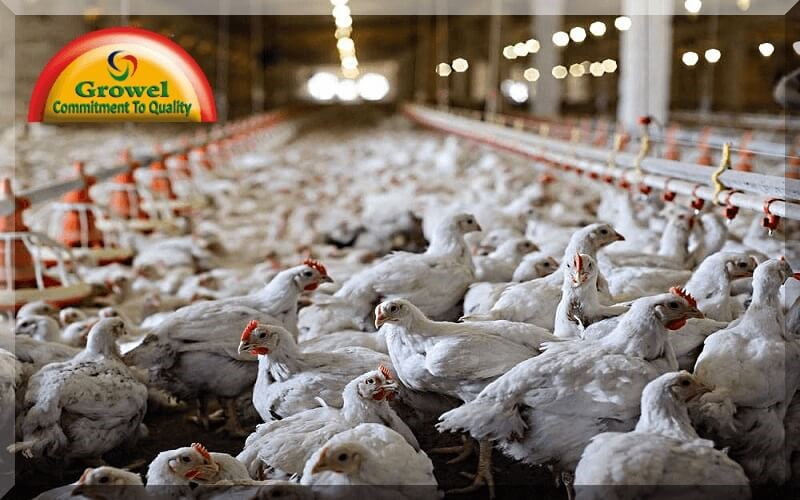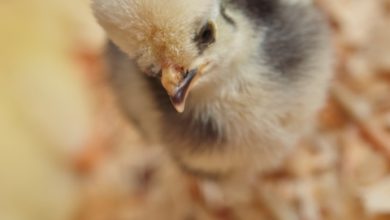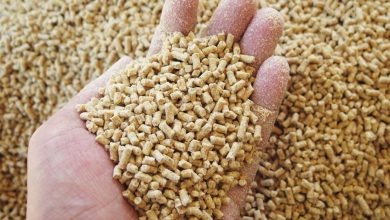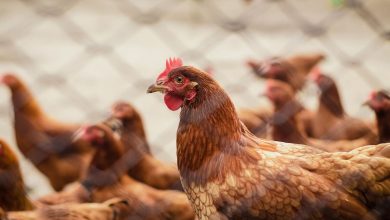Poultry Farming in Winter

Mr. Rakesh Kumar
Founder: Growel Agrovet Private Limited
Website: www.growelagrovet.com
Email: rakesh@growelagrovet.com
Poultry farming in winter require temperature administration of poultry house which is a critical pre-condition for better generation and well being of birds and better profit while doing poultry farming in winter .
To get the maximum profit out of the poultry farming business, the birds should be free from all types of stress. Nowadays, poultry is facing stress of harsh cold weather which needs proper management of temperature, humidity, litter, ammonia, feed, water, light and ventilation etc. These are of much importance while managing the birds as they affect its health and production.
Winter season has incredible impact on poultry generation by bringing down the temperature of encompassing. Amid winter when temperature goes down and different issues like decrease in egg generation, lessening in water consumption, diminishment in fruitfulness and hatchability and so forth happens. Consequently, the administration of poultry amid winter is an essential sympathy toward poultry agriculturist.
While doing poultry farming in winter should take proper care at the following points.
1.Poultry House Management
2.Poultry Ventilation Management
3.Poultry Litter Management
4.Poultry Feeding Management
5.Poultry Water Management
Poultry House Management :
The temperature is of much importance even before the arrival of chicks. One must say that optimum temperature requirements are more important for young chicks than older ones because older birds are better insulated with feathers, have less surface area and produce more heat than young chicks. For the day-old chicks, the shed should be pre-heated one to two days before the arrival of chicks. If it is not, the air and the litter will absorb heat from the bodies of the chicks and the birds may start shivering with cold. This will affect the growth of the birds.
The other thing is uniform distribution of temperature. The behaviour of the birds is a good parameter to assess whether the temperature is uniform in the whole shed or not. If the birds huddle close to the heating source, it indicates cold environment. In some situations, the birds are found in patches, called as ‘comfort zones’. The formation of comfort zones should be avoided by constant circulation and re-circulation of air.
The first thing is the insulation of the house. An insulated house provides opportunity of controlling cold air inside the shed. Walls give better insulation than open-sided house having curtains. One must ensure that there are no holes, cracks and crevices in the wall or roof from where air may enter. The pads must be sealed with some plastic or polythene sheets.
Poultry house ought to be composed in such an approach to give all the solace required by winged creatures amid winter. Introduction of a building as for wind and sun therefore impact temperature, and light on diverse outer surfaces. In winter the bend of the sun’s noticeable way is abbreviated, an east west arrangement of a rectangular house gives a greatest increase of sunlight based vitality in winter. House ought to be composed in a way that most extreme daylight enters the shed amid day time. Feathered creatures ought to be shielded from chilled winds, for this gunny packs ought to be hanged at the spots from where the frosty air enters. These gunny packs ought to be hanged down when daylight goes at night till the landing of daylight next morning. Getting brooding right is especially important in winter. While the method does not change with regard to temperatures and relative humidity inside the house, the cost and time to achieve the same results does increase.
Poultry Ventilation Management :
Fowls discharge a ton of dampness in their breath and droppings which antagonistically influences their well being, if there is confined ventilation it causes smelling salts develop noticeable all around which causes respiratory issues. In this way, they require a lot of outside air circling around the house. For the reason sliding windows are valuable as they can be opened amid day and shut amid night. There ought to likewise be course of action of fumes fans to evacuate unclean air. The first 24 to 48 hours is crucial in the bird’s life as this affects health and performance throughout the whole production cycle. While doing poultry farming in winter number of feeders ought to be expanded when contrasted with summer. Lower winter temperatures cause the air entering the house to fall very quickly to the floor due to the increased weight of moisture instead of mixing with the warmer air in the house and falling more slowly.
As this cold, damp air falls, bedding/litter can start to “go off” even in the early stages. It is therefore crucial to adjust ventilation and heating on a daily, or even hourly basis, to combat this effect.
It is important to get the air and floor temperatures correct, as chicks don’t have the ability to regulate their own body temperature until they are 12-14 days old.
Cold weather ventilation or winter ventilation is totally a new chapter as compared to the hot day’s ventilation. Farmers find it a nightmare to control ventilation in winter. Just look at the following points to control your cold weather ventilation.
Proper insulation and sealing of the shed is a prerequisite. The fans should be operated at their minimum capacity to contain maximum heat inside the shed. If this minimum ventilation is not provided, the inside air quality will deteriorate.
Increase the ventilation rate according to the age. Ventilation rate may be further increased if there is ammonia or wet litter problem. If ventilation rate is increased, add some heat in the air. If the house is hot, just adjust the addition of heat but don’t tune the fan because fans are required for removal of moisture and ammonia.
If litter gets dusty, decrease the ventilation rate, because extra dry litter may result in respiratory problems in the birds. Fresh air coming in should be mixed well with warm air before reaching the birds. Additional fans can be used to recalculate the warm air to save the cost.
With reference to laying birds, one thing very important is light management. Naturally, birds go on molting in short days i.e. in winter. The process of natural molting takes about four months and hence the birds go out of production. In such circumstances, it is very much important to give extra dose of light to keep them in production. Normal light duration of 14-16 hours is recommended.
Poultry Litter Management:
Before chick being put in house, the surface of floor ought to be secured with a bedding material called litter. It offers solace to the winged animals. A decent quality litter serves as an encasing in keeping up uniform temperature, likewise ingests dampness and advances drying. It weakens fecal material in this way diminishing contact in the middle of feathered creatures and fertiliser. It likewise protects the chicks from the cooling impacts of the ground and gives insurance pad in the middle of fowl and floor. Around 6 inches of litter is required in houses amid winter. The litter offers warmth to the flying creatures amid winter. In the event that litter administration is appropriate, it will be felt entirely warm when taken close by.
The litter is required to be managed efficiently because it gets wet quite easily with water coming from loose water pipe connections, drinkers, droppings and roof. This will result in cake formation in the litter which becomes good medium for anaerobic bacterial growth and ammonia production.
Normally litter moisture is maintained with in the range of 25-35 per cent. The heating and ventilation systems must be continuously monitored to ensure optimum level of moisture. Wetting of litter is further prevented by quality feed and water. Feed containing high quantities of wheat and barley, and water having high percentage of minerals like sodium, magnesium and chloride make the droppings soft that add up the moisture of the litter. If litter gets too much wet and there is cake formation then it is better to replace it.
Another issue of increasingly concern is production of bad odour, especially in the farms close to population. It is also an outcome of wet litter. If the litter is kept dry and there is an efficient ventilation system, this problem is automatically solved. Low pH also retards the degradation of the organic matter.
Poultry Feeding Management:
Poultry utilise nourishment for two fundamental purposes i.e., as a vitality source to keep up body temperature and to bear on ordinary physiological exercises and as building material for advancement of bones, substance, quill, egg and so on.
The variety in food utilisation is littler for every degree Fahrenheit change in temperature when the climate is frosty than when it is hot. Low temperature causes more encourage admission and higher oxygen request. Subsequently, when the climate gets colder, it is crucial to give the chicken a lot of sustenance as they require additional vitality for keeping up body temperature.
Consumption of calories of ME/winged animal/day shifts as the surrounding temperature changes. Typically these distinctions are as per the following:
When winged animal eat more nourish, alongside vitality, different supplements are additionally devoured more which are really not required and they turn into a waste. To maintain a strategic distance from this wastage amid winter vitality rich sources like oil/fat ought to be added to the eating regimen or level of different supplements may be decreased keeping the vitality at same level.
To give the chicks the best start they should be feeding and drinking as soon as possible. Producers should provide additional feed on paper placed on the floor, together with supplementary drinkers, allowing the least travel for any chick.
It is useful in the first 24 to 48 hours after placing to select a random sample of chicks a few times and gently check that the crop is full, soft and round to show that feed and water are present and the chick is thriving.
Feed and water must be of good quality to allow the chick to start the growing process immediately and aid absorption of the yolk sack.
Feed ought to be accessible to the feathered creature entire of the day. It has been tentatively demonstrated that for legitimate development of oven amid summer, diet containing 23% protein and 3100 Kcal ME/kg eating regimen is required. While in winter 3400 Kcal/kg ME and 23% protein is required. Raising the amino acid levels, even above recommended levels, will support better FCR, higher growth rates, and higher breast meat yields. Amino acid density then becomes a matter of setting economic priorities. Higher protein diets will result in higher water intake, more water excretion and higher depositions of nitrogen in the litter. So it is important to feed Amino Power from first day to twentieth at least.
The maintenance of caloric values in the feed also needs high consideration. Poultry feed should have high caloric value as compared to feed offered in summer season, such type feed keeps the birds warm.
Poultry Water Management:
During poultry farming in winter season winged creatures take less water so far support of water in the body, it is important to give constant supply of new water which can be taken by the feathered creature.
Water must be crisp and clean and you should mix Aquacure in drinking water. On the off chance that water is sufficiently chilly, then it ought to be given to chicken in the wake of adding boiling hot water to it, so that the water comes to ordinary temperature.
In ice falling territories, blockage of funnel is a major issue because of solidifying of water amid winter season. At the point when temperature goes underneath 0°C routine assessment of funnel line ought to be done to dodge blockage of water.
Many of immunisations /prescription/anti-stress vitamins like Growvit Power & Immune Booster should be given to poultry through water. As water utilisation of winged animal is decreased amid winter season. Thus, care ought to be taken that waters are uprooted couple of hours before water pharmaceutical and solution/immunisation is given in less measure of water so feathered creatures can expend complete water and every flying creature get advantage of medication/antibody or different poultry supplements.
Keeping chickens through the winter is not a hard thing to do with the right information & quality poultry healthcare products .I hope this article will be helpful for you, doing poultry farming in winter.





